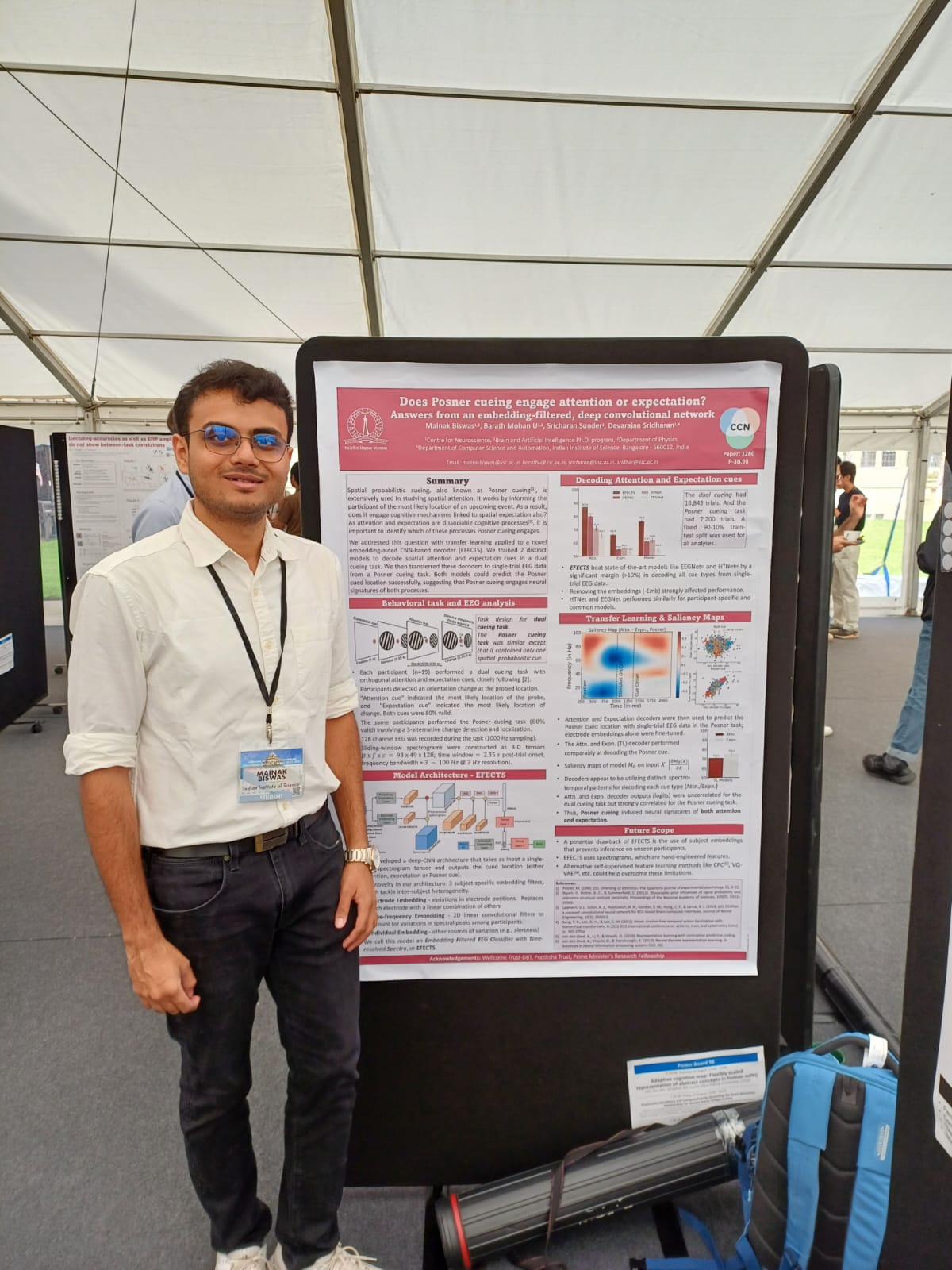Research Projects
The following is the list of research projects, that I have worked on.
Transfer Learning, semi-supervised learning, Cognition Lab, IISc, 2024
State-of-the-art deep learning models are seldom as efficient in neuroscience as in domains with access to big data. A major reason is the rarity of large labeled datasets. Hence, the role of pre-trained models (transfer learning) and unlabeled data (semi-supervised learning) is important. We propose Contradistinguisher Regularized Adaptive FineTuning (CRAFT) of neural networks – a method for efficient transfer and semi-supervised learning.
Selective Classification, Domain Adaptation, Medical Imaging, Cognition Lab, IISc, 2024
Here, we address a major challenge with domain generalization – selective classification during automated medical image diagnosis. During selective classification, models must abstain from making predictions when label confidence is low, especially for samples that deviate from the training set (covariate shift). Such uncertain samples are referred to the clinician for further evaluation (“referral”). Yet, we see that even state-of-the-art deep learning models fail dramatically during referral when tested on medical images acquired from a different demographic or with different technology.
Transfer Learning, Domain Adaptation, Brain age prediction, Cognition Lab, IISc, 2024
Increasing life expectancy and global median age make the population more susceptible to age-related neurological and cognitive disorders like mild cognitive impairments (MCI) and Alzheimer’s disease (AD). These disorders are known to greatly degrade the quality of life. Hence, detecting an early onset of these diseases becomes critical for the timely prognosis.
Generative Modeling, Brain age prediction, Cognition Lab, IISc, 2023
Diffusion Magnetic Resonance Imaging (dMRI) helps find the structural connectivity of the brain in the form of an undirected graph. Therefore, these graphs can be used as markers for brain age. But data scarcity makes it challenging for naïve deep-learning algorithms to succeed at this problem. Even larger datasets, like – Rush Alzheimer’s Disease Center (RADC) have around 750 scans. Therefore, data augmentation is one of the most viable solutions to this problem. The recent success of conditional stable (latent) diffusion models is not limited to just generating realistic natural images based on an input text (DALLE-2). They have been used successfully for stimulus reconstruction conditioned on the input fMRI activity. We propose the use of latent diffusion models for the generation of connectivity matrices conditioned on age. A realistic augmentation of the training set can reduce overfitting and help build a robust brain-age decoder from connectivity matrices.
Attention, Deep Learning, Cognition Lab, IISc, 2022
EEG data is extremely noisy, and heterogenous across humans. Variability increases further if the task design of a psychophysical changes. This project aims at answering the following:
SLID, Speech Signal Processing, Deep Learning, Jadavpur University, 2020
This aims at identifying language from speech data. Many Indian languages have similar phonemes, which makes it challenging to separate them. This project uses MFCC features to develop diffent algorithms to tackle this problem.
NLP, weighted finite state transducers, Voice Intelligence, SRIB, 2020
Text Normalization plays important role in all NLP pipeline. It is used to convert different representation of an entity into a single cannonical form. Weighted finite state transducers were used for this problem. This describes the technical details.
For more details about my projects, please look at my
Resume (2022), and visit my
Github account.
